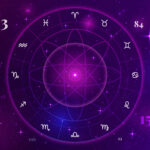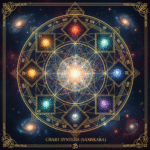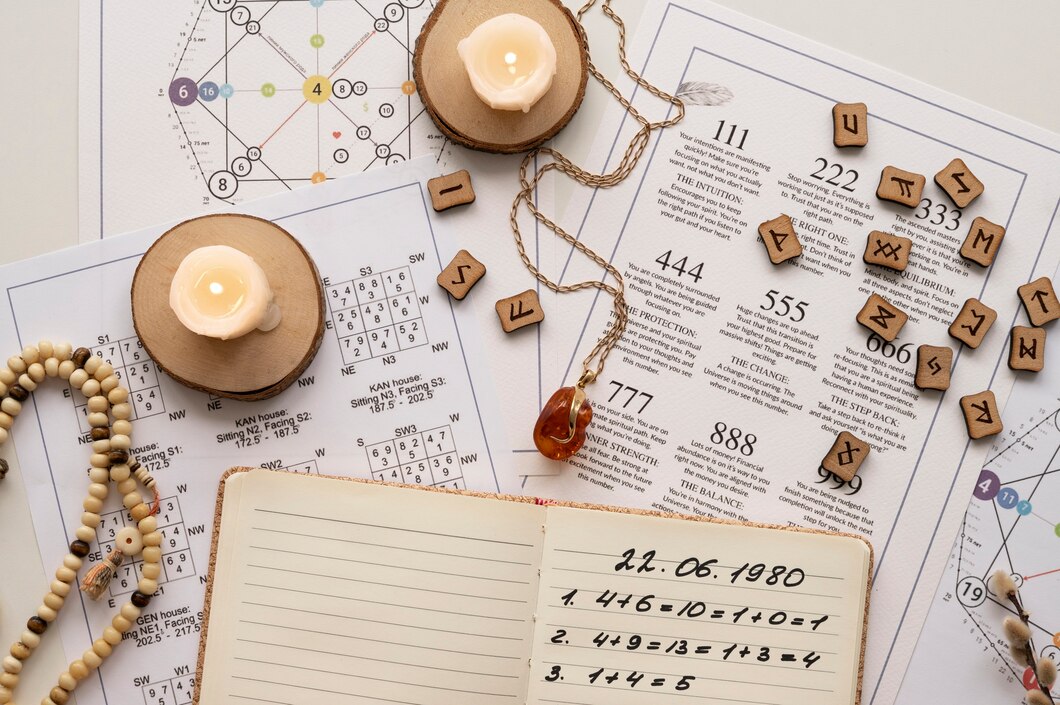Is your love written in the stars, or is it destined for friction? For centuries, seekers of lasting harmony have turned to the ancient wisdom of Vedic astrology (Jyotish). At the heart of this tradition lies the celebrated and often misunderstood process of kundli matching, anchored by the powerful Gun Milan, or Ashtakoot Milan—a profound 36-point system designed to test the fundamental harmony between two souls.
This article, dedicated to the essence of Vedic compatibility, will demystify the 36-point matching system. We will explore what the score truly signifies, what each of the 36 gunas (points) measures, and, most importantly, why this ancient metric is a compassionate tool for understanding your relationship’s unique dynamics, rather than a definitive final verdict on your future.
The Core Blueprint: Understanding the Ashtakoot Milan
The term Gun Milan literally means “the matching of qualities.” It is formally known as Ashtakoot Milan (Ashta meaning eight, Koota meaning factors), referring to the eight key compatibility factors derived from the Moon’s position (Nakshatra and Rasi or Zodiac Sign) in the charts of the prospective bride and groom.
This 36 point matching system assesses core compatibility across four critical dimensions: mental, physical, spiritual, and financial. It moves past superficial attraction to look at the deep-seated tendencies and energetic alignment that define the long-term success of a marital union.
The maximum score is 36 gunas. While a score of 18 is typically considered the minimum acceptable threshold for marriage, a truly high score acts as an astrological insurance policy, suggesting fewer inherent conflicts in the couple’s core nature.
The Eight Kutas: The Anatomy of the 36 Gunas
The eight factors of the kundli matching system are weighted, with the highest scores given to those factors deemed most crucial for the health and longevity of the family line.
| Koota (Factor) | Max Points | Primary Compatibility Focus | What it Assesses |
| 1. Varna | 1 Point | Spiritual/Ego Level | Alignment of life goals and mutual growth; potential for ego clashes. |
| 2. Vashya | 2 Points | Mutual Attraction/Control | Power dynamics and who naturally has influence over the other. |
| 3. Tara | 3 Points | Destiny/Well-being | Mutual fortune, longevity, and health stability. |
| 4. Yoni | 4 Points | Sexual/Physical Intimacy | Physical attraction, mutual love, and intimate behavioral harmony. |
| 5. Graha Maitri | 5 Points | Mental/Intellectual Connection | Planetary friendship between Moon signs; emotional and mental wavelength. |
| 6. Gana | 6 Points | Temperament/Behavior | Psychological affinity, nature, and mutual temperament (Deva, Manava, Rakshasa). |
| 7. Bhakoot (Rasi) | 7 Points | Prosperity/Family Harmony | Emotional and financial compatibility; impact on wealth and family size. |
| 8. Nadi | 8 Points | Health, Genetics, & Progeny | Genetic compatibility, health of offspring, and flow of life-force (Prana). |
| Total | 36 Gunas | Holistic Life Harmony |
Notice the clear weighting: Nadi, Bhakoot, and Gana—which govern health, wealth, and mind—account for 21 of the 36 gunas. This emphasizes that the true anchors of a lasting marriage are vitality, stability, and psychological harmony.
The Compassionate View: The OREO Framework Applied
In modern times, couples who have deeply fallen in love often face distress when their gun milan score falls short. It is vital to bring a practical, sensitive, and holistic perspective to this ancient calculus.
Opinion: The 36-Point System is an Assessment, Not a Sentence
Opinion: The Gun Milan 36-point matching system provides a profound pre-screening for vedic compatibility, illuminating the native energies a couple brings together, but it is never the final arbiter of a marriage’s success. It serves as a diagnostic tool, not a destiny-sealer.
Reason: Gun Milan is Only a Partial Kundli Matching System
Reason: The Ashtakoot Milan method is based exclusively on the relative positions of the Moon in the birth charts (the Nakshatra and Rasi). The Moon beautifully assesses emotional, mental, and behavioral patterns. However, it completely excludes other planetary dynamics essential for a complete kundli matching system analysis, such as:
- The strength and placement of the 7th House Lord (the primary significator of partnership).
- Critical planetary afflictions, most notably Mangal Dosha (Mars affliction), which deals with energy and aggression.
- The condition of benefics like Venus (love) and Jupiter (wisdom).
- The current and future Dasha (planetary ruling periods) of the couple.
These factors can override a “perfect” score or beautifully compensate for a low one.
Example: Strength Beyond the 36 Gunas
Consider a couple who scores an “ideal” 30/36 gunas. They possess excellent basic vedic compatibility. However, if their full chart analysis reveals a severe 7th-house affliction (e.g., Saturn and Rahu combined) and they run a difficult, disharmonious planetary Dasha sequence immediately after marriage, the union can still crumble under the weight of external pressures and relationship strain.
Conversely, a couple scoring a “below-average” 15/36 gunas might have exceptionally strong 7th Lords, a powerful mutual Graha Maitri (mental connection), and are entering a period of benevolent Dasha cycles. Their Gun Milan simply flags areas—perhaps a Nadi Dosha or Bhakoot Dosha—where they must be extra communicative and prepared to apply remedies, but their overall destiny for partnership remains strong.
Restatement: Use the Score as a Map, Not a Wall
Therefore, treat your Gun Milan score as a map of your relationship’s native terrain. It shows where the smooth highways are and where the rugged mountains lie. It is a guide to understand your mutual strengths and challenges as a couple, empowering you to address potential friction points with conscious effort and love, rather than viewing it as a prohibitive score for your life together.
The Three Pillars: Nadi, Bhakoot, and Gana
To fully utilize the 36-point matching system, one must understand the three Kutas that carry the highest weight, as they form the pillars of long-term life together.
1. Nadi Koota (8 Points): The Genetic Current
The highest-scoring factor, Nadi, relates to the three basic constitutions of Ayurveda: Aadi (Vata/Air), Madhya (Pitta/Fire), and Antya (Kapha/Water). Compatibility is highest when the partners have different Nadis. A same-Nadi pairing is known as Nadi Dosha and is often considered a critical affliction because it impacts the couple’s health and, traditionally, the capacity for healthy progeny.
Practical Takeaway: If a Nadi Dosha exists, modern couples should not despair but use this insight for proactive health and family planning. It signals a potential genetic overlap that may need conscious balancing through lifestyle and, if desired, astrological remedies.
2. Bhakoot Koota (7 Points): Material and Emotional Flow
Bhakoot measures the Moon Rasi (Sign) compatibility by analyzing the distance between the two signs. Poor Bhakoot alignment (Bhakoot Dosha) can signal discord in the family, financial instability, or a lack of emotional support and cooperation in life’s major decisions.
Practical Takeaway: A low Bhakoot score means the couple must be extremely organized and transparent about joint finances and must build strong emotional boundaries against external family interference. The potential for loss is high, necessitating proactive planning.
3. Gana Koota (6 Points): The Essence of Temperament
Gana assesses the native disposition (temperament) of the two individuals—classified as Deva (Divine/Moral), Manushya (Human/Balanced), or Rakshasa (Fiery/Assertive).
Practical Takeaway: A match between a Deva Gana and a Rakshasa Gana, though scoring low, can teach both individuals profound lessons. The Rakshasa person brings fire and decisiveness, while the Deva person brings calm and morality. The challenge is learning to honor the partner’s fundamental nature rather than trying to change it. This is where communication becomes the true alchemy.
The Final Wisdom of Kundli Milan
The practice of kundli milan system is a testament to the idea that love is not a singular emotion but a complex blend of psychological, energetic, and karmic connections. A high score of 36 gunas is a wonderful starting point, a celestial blessing. A low score is a call to conscious relationship work.
As a senior content writer and Jyotish enthusiast, I encourage you to use the Gun Milan not as a barrier, but as a flashlight, revealing the deepest, most subtle layers of your vedic compatibility. By understanding the reasons behind the score—the specific energies of the ashtakoot milan at play—you empower yourselves to co-create a marriage that is not merely destined, but deliberately harmonious and deeply fulfilling.











